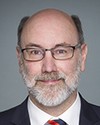Under your opening comments, Minister, you state that in the Canada Infrastructure Bank you freed up grant funding. I don't think you necessarily freed it up. I'll give you a chance to rephrase that.
There's the $5 billion you took from the investing in Canada plan under public transit systems. You took $5 billion from trade and transportation corridors. You took $5 billion from green infrastructure projects. There's now $15 billion that is sitting in the Infrastructure Bank. You've mentioned that you built one project in Montreal, which was a reannouncement of what the Prime Minister announced back in June of 2017.
First, I don't see how that's freeing up money. That's just moving money around. Secondly, the Infrastructure Bank, for which you trumpet so much success in your opening comments, I think across the country, has been referred to as anything but. I've heard it called a disaster and a debacle. I'm hoping you can comment on why this infrastructure money isn't flowing.
Quite frankly, it's not freeing up anything. It's just moving money around at this point.



